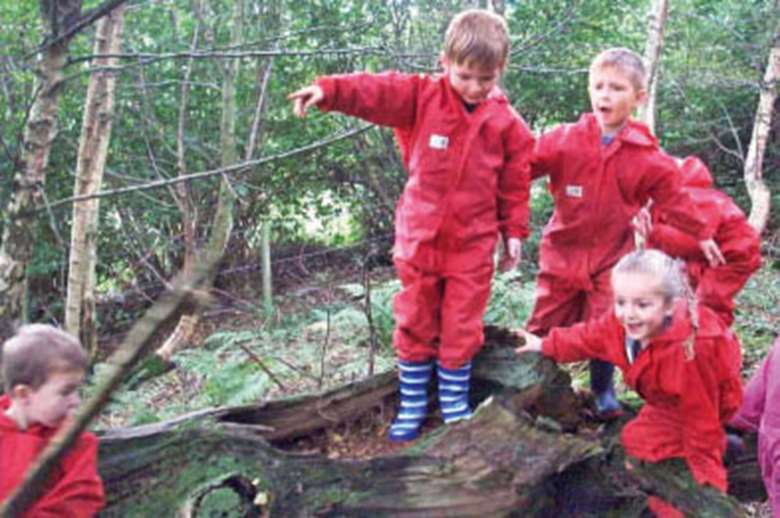Enabling Environments: Forest schools - Talking trees
Caroline Watts
Friday, March 8, 2013
A forest environment stimulates the use of descriptive language, says Caroline Watts, a Forest Schools leader for several schools in Kent.

Sensory language is evoked in abundance at Forest School as children experience nature's ever-changing scene. Recently, a group of four-year-olds spontaneously began to describe walking through mud, and with encouragement came up with 11 words to describe their experience: 'it's squelchy, squishy, squashy, slidey, sticky, mushy, gooey, slippy, slimy, yuck ... stuck!'
We can read stories about the world around us, but it's only by being immersed in it that we make full connections with the language it inspires. We have to feel mud under our toes to understand that it's squelchy, to mix mud to know it looks like chocolate and to dig up clay to know that it comes from the earth, and that it feels sticky.
As well as stimulating descriptive language, the excitement of the woods encourages the less confident to talk more - describing finding a mushroom or digging up unknown treasure. This sometimes means projecting their voices across open spaces - for example, calling out 'Look at me, I'm a monkey!' while hanging from a tree!
The freedom of the woods also inspires children's imagination and creativity - 'Look ... a secret pathway,' said one child on seeing an archway in the bushes. 'The trees are holding hands,' said another on noticing how the trees bent towards each other.
A DIFFERENT PERSPECTIVE
 Climbing trees prompts language of perspective - 'Look, I'm up high. I can see the field over there ... I can see everybody below me,' said one child - and can be encouraged through questioning.
Climbing trees prompts language of perspective - 'Look, I'm up high. I can see the field over there ... I can see everybody below me,' said one child - and can be encouraged through questioning.
Dens and tents provide timid children with the kind of private spaces in which they feel more confident to talk - sometimes to themselves, or to a friend. To build a den, just lean branches and ferns against a tree, or tie a rope between two trees, lay a tarpaulin over the top and peg out the sides to make a small tent.
The other great opportunity for talking is at the end of the session, when we come together in a log circle to discuss what we have been doing and to tell the group what we liked most. Over time, children start to speak more confidently and are often happy to talk about their favourite thing.
We also summon the children to the circle by calling their chosen group name, such as 'Hedgehogs' or 'Squirrels', and encourage a few, often more timid, children to join in the shouting - something they often aren't able to do freely indoors!




